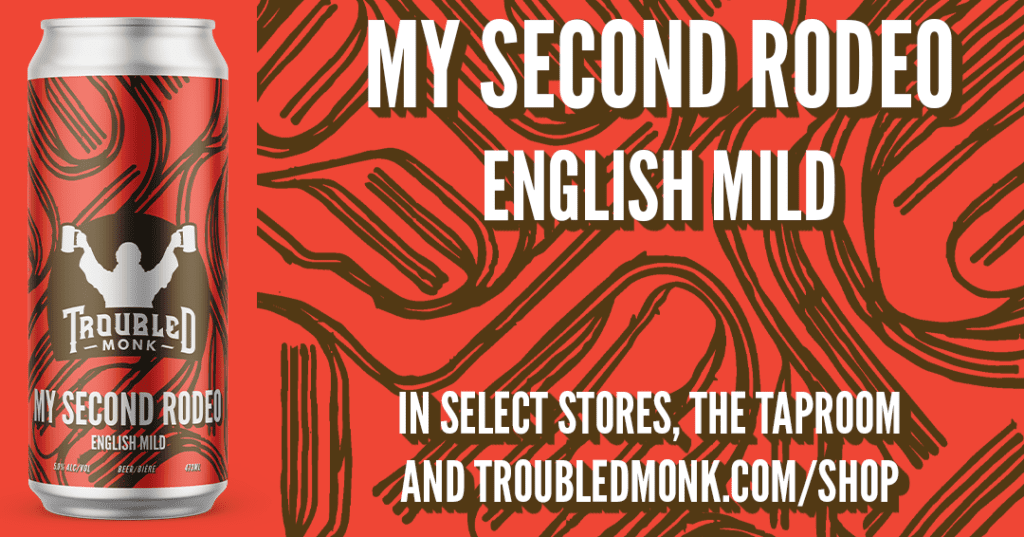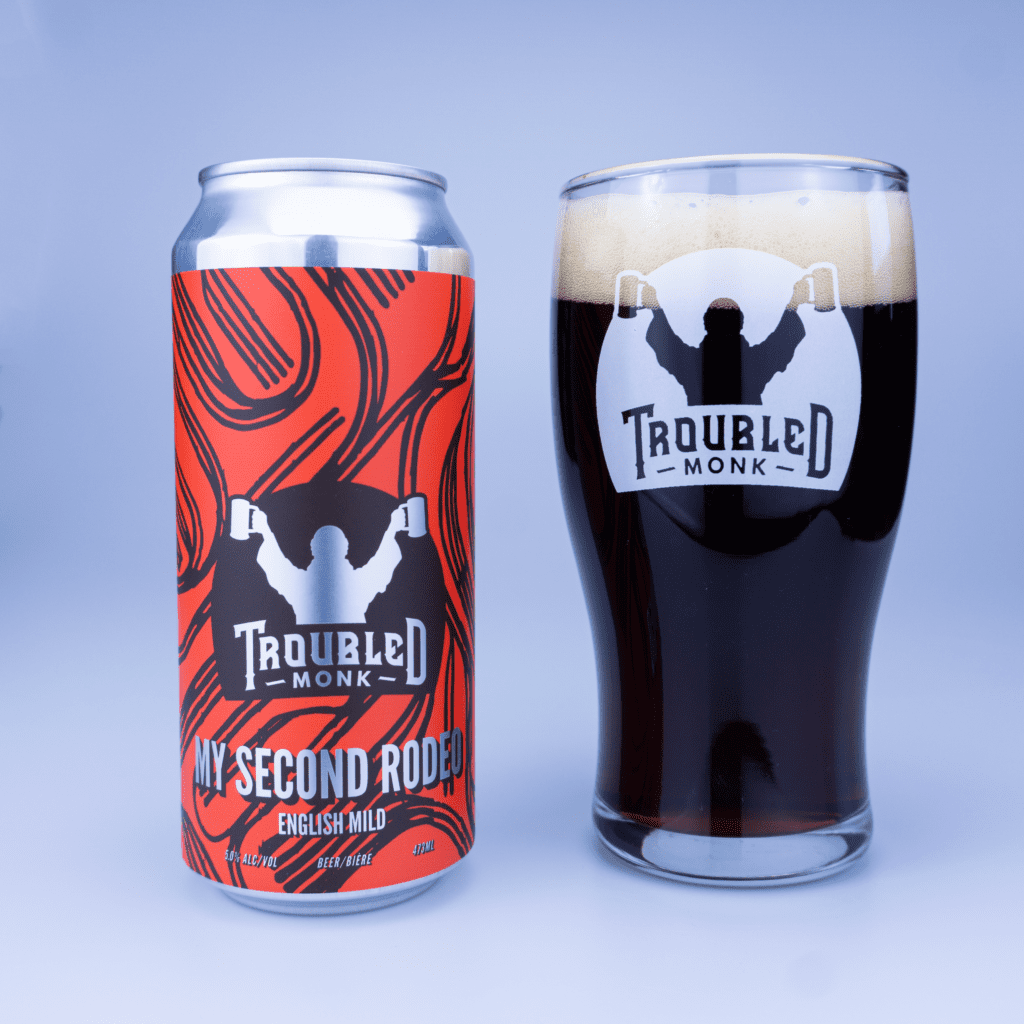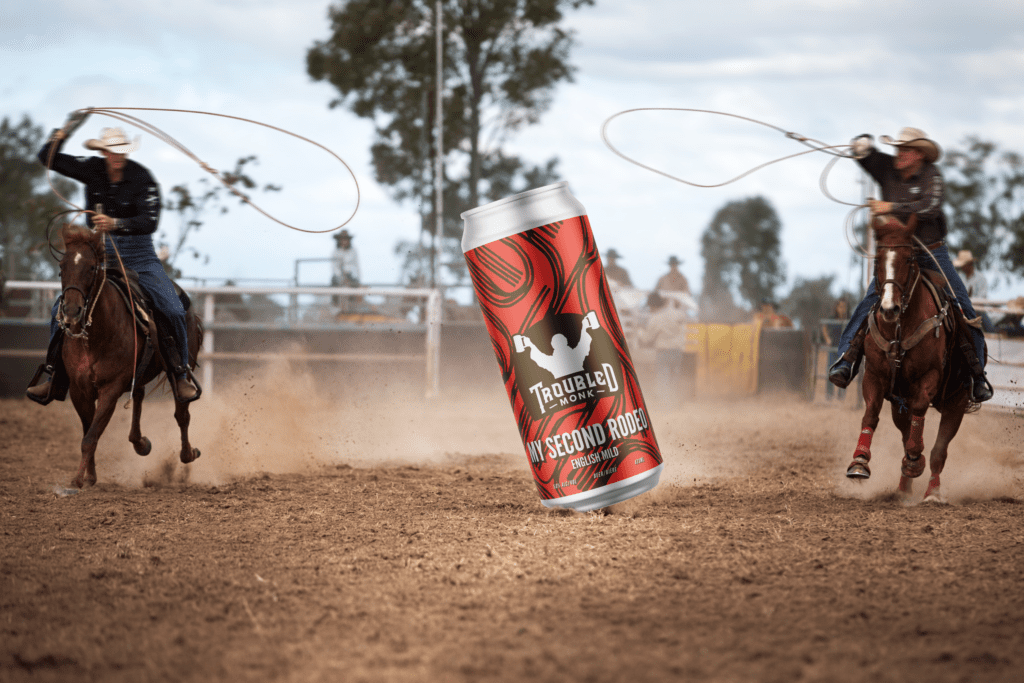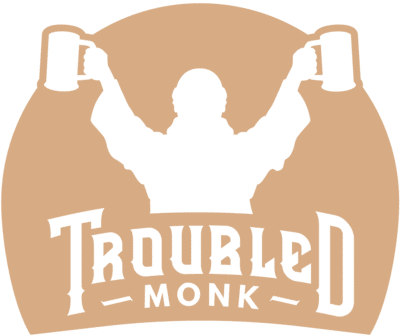By: Naomi Kerchinsky
This isn’t our first rodeo. We realize we made some big beers in 2021, and it is hard to live in the cloud of expectation to brew another real bucker. So we went Be 90, go big or go home, and brewed for y’all My Second Rodeo English Mild. Although the word mild makes it sound like it’s some basic beer, its elusive and transformational nature, misunderstood and underappreciated style, and potential for varied interpretation is the perfect beer to make when you need to get back on and let ‘r buck.

| My Second Rodeo | |
|---|---|
| ABV | 5% |
| IBU | 30 |
| SRM | 20 |
Warm & Toasty, Easy Drinking
This beer pours a dark brown with ruby highlights on the edges. The aroma is dark caramel with roast, toast, and molasses notes that evoke a slight tartness. Bread and crust also come through with pecan nuts. There is a slight fruitiness, like caneberries (raspberry or blackberry) in the first sip along with chocolate and roast from Red Shed’s Roasted Barley, Light Chocolate and Chocolate malts. Nugget hops give a mild earthy top note and the finish is clean but not abrupt. This is an easy-drinking beer that politely asks for a little more attention if you care to spend time with it.

Fun Fact: When brewer Andrew began this beer, he had a different intent for style in mind, but sometimes to make a delicious beer you got to just let ‘r buck and see where it ends up.
What is an English Mild?
An English Mild is a staple in the history of British brewing but rarely is it present in modern-day craft brewing rosters. This may be due to English Mild’s broad style and ridiculous range that makes it hard to pinpoint an exact style.
An English Mild literally assumes every role, putting on whatever hat fits the occasion, yet always offering the beer drinker restorative and session qualities. In the modern mind, this style of beer is often confused as being ubiquitous with a low ABV. However, English Mild’s are entwined with many different styles of beers: browns, or porters, or stouts, and can range anywhere from really light to really dark. It truly is a style that encompasses a broad range of colours, flavours, and strengths.
Historically, the term “mild” designated a whole class of beers more in line with age than style. A mild beer was a young, green, not kept beer that did not stick around. Mild and brown are two of the very oldest words used to describe beers. In the 19th and 20th centuries as aging ales fell from grace the term brown ale was no longer a catch-all buzzword. Mild ales took over to refer to an entire set of beers that were brown and malty in colour with a typical gravity range from 1.055-1.080. In the Art of Brewing published in 1871, a mild was listed with an average gravity of 1.070 which is a higher gravity than a typical porter! Whether these beers became lighter due to consumer demand or because brewers were trying to reduce costs is up for debate, but the modern interpretation of a mild is defined with a lower gravity between 1.030-1.036. Yet some notable examples have gravity as high as 1.050, and can either be pale or dark, with minimal hop character, contain malty notes, and have chocolate as a common flavour.
The bottom line is that mild has meant different things at different times, and the style’s many different moods allow for a wide interpretation for modern brewers. This makes it a perfect beer to get back on, and let ‘r buck because you don’t have to live up to expectations when those expectations are so varied.

Get Back On
We weren’t born yesterday. We’ve been around the block, and you know this isn’t our first rodeo. We know it’s not about how good your beer is, it’s about how good your last beer was, and then coping with the soul-crushing pressure of living up to those expectations. So when that big beer bucks you off, you’ve got to get back on!

